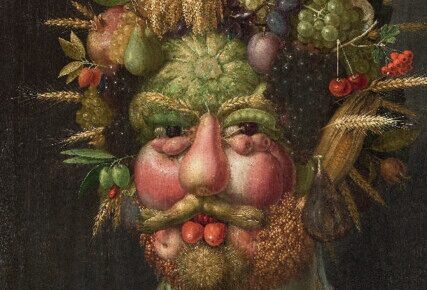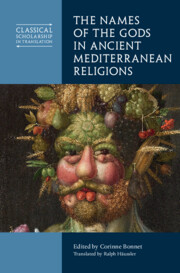
Thales of Miletus, in the 6th century BCE, asserted that “everything is full of gods”. In his view, even inanimate things were in fact animate. His vision of the world, taken up by Plato, implies the presence of an infinite number of divinities in the kosmos, which is also inhabited by human beings. The complexity of the religious systems in Antiquity – Greek, Roman, Egyptian, Mesopotamian, Phoenician, Nabataean, Iranian, etc. – known as “polytheisms” is a fascinating issue. Not only are there a large number of divinities, implanted in thousands of places – a sanctuary, a city, a wood, a crossroads, a spring, a court, a mountain, a palace, a domestic or professional space, right down to the potter’s kiln! –, but according to the representations of the ancient people, the divinities could inhabit several places at once because of their ability to be ubiquitous, which was a divine privilege, and they also could travel, move around, leave one sanctuary to take up another. The extremely complex and dynamic nature of polytheisms, which we would be wrong to regard as chaotic, is further reinforced by the fact that each divinity is a complex entity in its own: it is attributed several genealogies, various functions and modes of intervention, different appearances and attributes, several relationships with other divinities, and a whole panoply of names. Penetrating the logic of organisation and use of this plural divine world is a challenge for contemporary historians of religions, but it was already a challenge for the Ancients themselves, who admitted that reliable knowledge of the divine world was fundamentally beyond their reach.
Yet shaping, building, implanting and honouring a this immense network of divine powers only makes sense because people set up various forms of interaction with them. Building places of worship, erecting statues made of materials that are often precious, mobilising staff to take care of the gods comes at a considerable cost: it is an investment that societies make, collectively or individually, in an attempt to try to benefit from the protection of superhuman entities.
I say “try”, because the interaction between men and gods is profoundly asymmetrical and its outcome is never certain. The god can refuse to listen to the prayers and help, and can even turn against humans by distributing epidemics and violence, famine and earthquakes. In such a context, the names people use in their dealings with the gods are of crucial importance. They are used to clearly identify the divine interlocutor, or interlocutors (because an offering can be made to several associated deities: “Baal Shamem and Baal of Byblos and the assembly of the holy gods of Byblos”), to specify the function(s) that are addressed. Names, understood in the broad sense of proper nouns, associated with epithets or other qualifications, also make it possible to praise, honour or acclaim a deity by emphasising his or her qualities, in a captatio benevolentiae (“the Great Goddess All-Saviour Isis”).
Imagine you are visiting the sanctuary of Bostan esh-Sheikh on the outskirts of Sidon, in Phoenicia. It is a prestigious royal sanctuary covering a vast area outside the city, with several buildings sheltering different deities (separately and together). The rituals taking place there involve the use of water, which was widely present in the sanctuary, for therapeutic or prophylactic purposes. The presence of numerous statues and statuettes of young children suggests that some rites of passage were performed under the benevolent gaze of the gods. Who should I talk to, and in what precise terms, if I visit that sanctuary with my family to seek effective protection? The god Eshmoun is referred to several times, in Phoenician inscriptions, as “holy prince of the Yd(l)al spring”, but also as “lord”, “my/our lord”, with a possessive suffix that emphasises a more intense or intimate relationship. If you happen to be a Greek soldier, a member of the military garrison that Alexander the Great left in Sidon after his victorious passage through the region in 332 BC, and therefore a Greek speaker, you can address the god as “Asklepios”, sometimes called “holy god”, to underline the effectiveness of his power. If you send a prayer to Asklepios, you will have in mind both the local Phoenician god, Eshmun, and the Greek Asklepios, the one worshipped in Epidauros, Pergamon and Athens in particular, although these two divinities dot not perfectly overlap; it is their functions that bring them together. The sanctuary of Bostan esh-Sheikh also preserved dedications to Astarte in Phoenician, once described as “powerful”, to Shamash, the solar god, to the goddess Rome, to Delphic Apollo and to Cadmean Dionysos (by reference to Cadmos, whose Phoenician origin is well known and who was the grandfather of Dionysos).
Visitors must therefore make choices when addressing one or more gods, choices based on their (implicit) knowledge of these deities, their names, functions and possible combinations. Apollo, for example, is the father of Asklepios. But what is the best onomastic strategy to be successful? The visitors adopt a pragmatic and empirical approach, based on the context, and, if the negotiation succeeds, he/she leaves a written trace, on an altar, a stele, a statue…, which has come down to us, complete or fragmentary form. This object becomes a precise source of information for the historians: who was this visitor? What is his/her status? origin? occupation? Did he/she came alone or with the family? What did he/she ask the god(s) and what names did he/she choose among many different options? Did he/she associate his/her testimony with an image? Does the text provide information on the context of the ritual exchange: a festival, an illness, a travel, a pilgrimage?
Tens, if not hundreds, of thousands of documents of this type have survived from Antiquity. They are often repetitive and laconic, but they give us access to the everyday life of what we call “religion”. Between 2017 and 2023, in Toulouse, as part of a European project, a team of researchers decided to seize this epigraphic material and, focusing on the Greek and Semitic worlds (Aramaic, Hebrew, Phoenician and Punic, Nabataean, etc.), between 1000 BCE and 400 CE, to systematically collect in a database available in open access (https://base-map-polytheisms.huma-num.fr/) all divine names, whenever they contained at least one proper name and a qualification. To date, almost 20,000 inscriptions have been identified, containing more than 24,000 divine names, forged using almost 4,400 different Greek or Semitic elements, i.e. substantives, adjectives, verbs, all sort of words used to name and qualify the gods. It is a bit like visiting a sanctuary and finding 4,400 Lego bricks with which to build a divine name. What a complicated choice! And at the same time, what creativity this richness allowed! The longest set of divine names currently recorded in the database contains 143 elements put together, but that’s very rare! Most of the time, names contain 2, 3 or 4 elements (75% of the whole). How did people find their way around? In truth, the stock of 4400 items is an artefact that we have fabricated with the database, since it covers different languages, eras and places. No-one has ever had so many items at their disposal; on the contrary, as we saw at Sidon, a visitor might have had around approximately twenty items, maybe fifty traditionally used in a place of worship. However, nothing prevented him from innovating: in the metrical inscriptions, for example, in which the poets gave free rein to their imagination and erudition, curious and sophisticated adjectives pop up, such as “Who lifts the spirits” (Aersiphron), applied to Dionysos, or “Rejoiced with tears” (Dakruchares) for Hades.
In their great diversity, despite some extremely monotonous recurrences, such as Apollo Pythios at Delphi or Tanit Face of Baal at Carthage, all these onomastic elements give access to divine portraits that are complex, kaleidoscopic, paradoxical in the manner of Arcimboldo’s portraits. To understand them, it is necessary to study them in relation to each other, and not in isolation, because the cartography of divine powers is made up of superimpositions, crossings and intersections… Zeus, with his 400 or so different qualifications, covers a particularly vast field, where he sometimes crosses paths with Athena, Poseidon, the Muses, Hera, Apollo, Artemis, Themis, Nemesis… In a specific field, like craftsmanship, or war, or justice, many different gods collaborate; the names show these networks of “gods at work”.
The almost countless names of the ancient Mediterranean gods offer an amazingly fertile avenue to a better understanding of the gods, but also of human beings who created them. They trigger an approach to religion as a social activity embedded in historical contexts, made of empirical practices in which experimentation plays a large part.

The Names of the Gods in
Ancient Mediterranean
Religions by Corinne Bonnet
Latest Comments
Have your say!